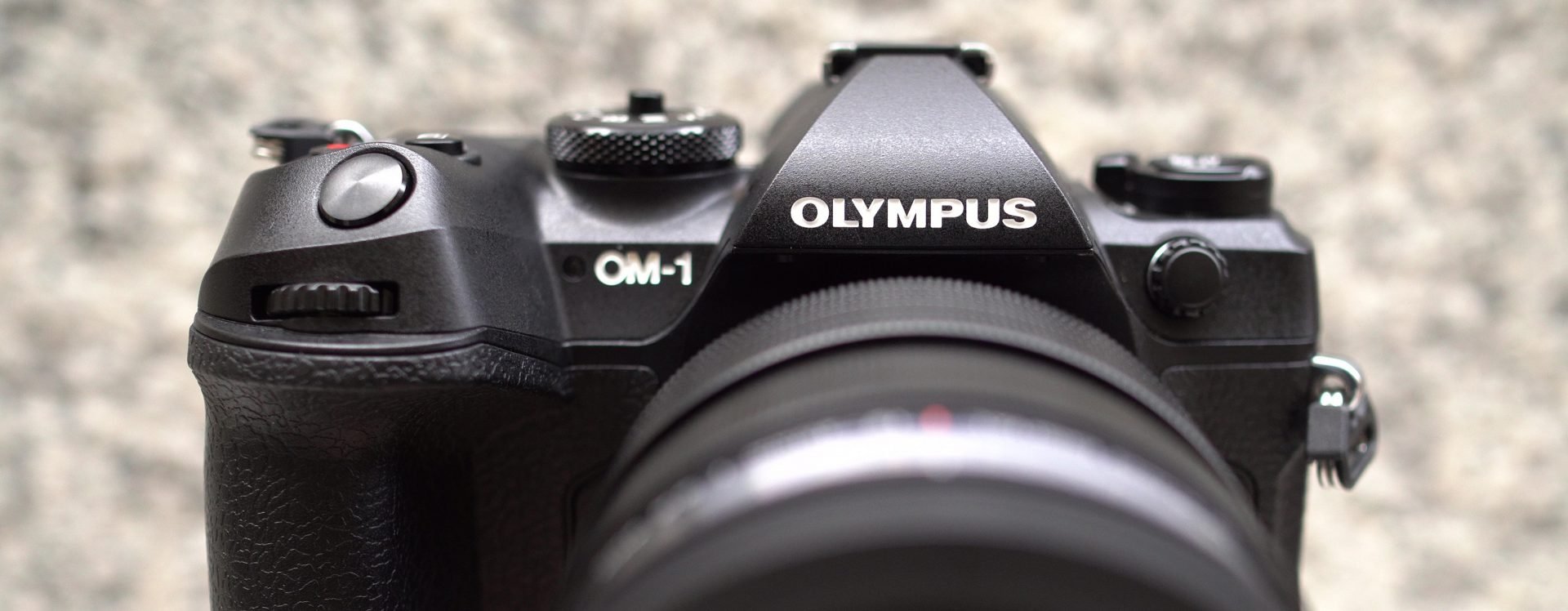OM System Olympus OM-1 review
-
-
Written by Gordon Laing
The Olympus OM-1 is the flagship mirrorless camera from OM System. Yes, the Olympus logo on the head of a new body, something I don’t think any of us expected to see following the camera division’s split from Olympus Corporation in 2021.
But this is a special occasion, with 2022 marking the 50th anniversary of the original Olympus OM-1 35mm film SLR. To celebrate, the new OM System digital camera shares exactly the same name, even dispensing with the previous OM-D branding. And while there is an OM System logo nestled discreetly in the corner of the body, it’s the Olympus name that boldly enjoys pride of place on the head. OM System assures me this will be the last camera to sport the Olympus name, but there’s no doubt it will strike a powerful chord with fans of the brand and its long history.
The OM-1 is based on the Micro Four Thirds standard, employs a new stacked 20 Megapixel sensor, can record 4k video up to 60p, boasts industry-leading weather-sealing and stabilisation, and costs $2200 or Euros, or 2000 pounds for the body alone. OM System gave me a brief chance to try out the OM-1 for this hands-on preview, so I can tell you all about what’s new and how it fits into the line-up. I’ll follow this up with a full review of a final production model as soon as they become available, and once that’s ready I’ll link to it here. As always everything I know is in the video below, but if you prefer to read a written version, keep scrolling!
The OM-1 may not be an official member of the OM-D series, but it unsurprisingly – and wisely – shares a lot of the design DNA we’ve come to know and love. It’s unsurprisingly closest in style to the EM1 Mark III, a model that continues to sell for roughly two thirds the price of the new OM-1.
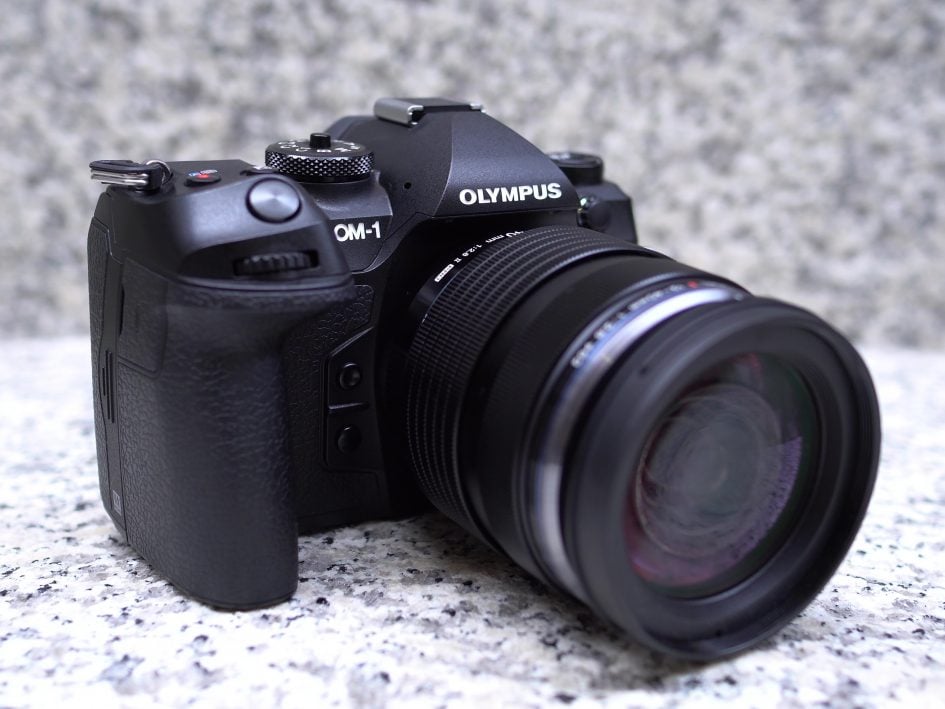
The grip’s a little deeper than the Mark III, and feels very comfortable in your hands. It weighs 599g with battery and card making it only 19g heavier than the Mark III, and the dimensions are almost identical other than the slightly deeper grip.
Olympus was always ahead of the game regarding weather-sealing and the only company in its peer group to actually quote industry standards. While the EM-1 Mark III and EM1X were rated as IPX1 though, the OM-1 goes a little further to attain an IP53 rating.
This means it’s now protected from water spray less than 60 degrees from vertical, so while that’s still way less than the dunking a top-end smartphone can survive, it’s still an improvement over previous models which I was able to pour water over without complaint.
Either way, respect to the company for being the only one to issue proper weather-sealing certification rather than a nebulous suggestion of what it might be capable of.
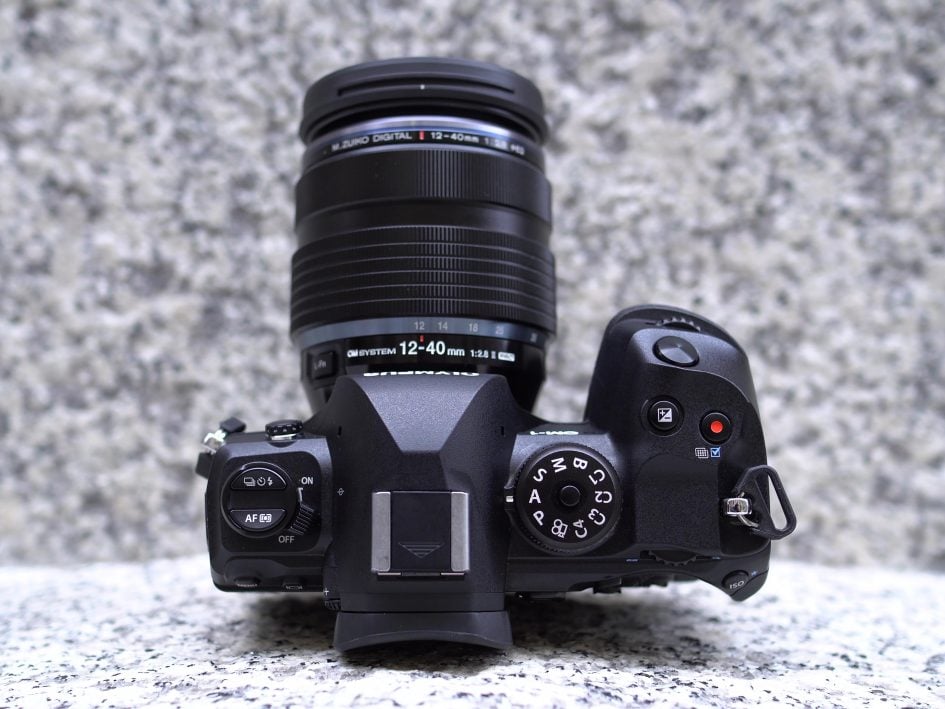
From the top, the control layout is similar to the EM1 III with a power collar switch around hard buttons for the drive, flash, AF and metering modes to the left of the viewfinder.
Meanwhile on the right are a chunky lockable mode dial and buttons for exposure compensation and movie recording, the latter doubling as a toggle for the High Res composite mode. The decent-sized and tactile thumb and finger dials remain, although are now embedded into the body rather than sitting on top.
Round the back, the layout continues to be almost the same as the EM1 III including the AF joystick, although the the AF On function now wisely has its own dedicated button rather than sharing it with AEL on the Mark III.
Behind a door on the grip side are twin SD card slots, both now supporting UHS-II speeds, an upgrade over the Mark III which only supported UHS-II speeds on one slot.
Behind three flaps on the left side are the same four ports as the Mark III before it, so USB-C, Micro HDMI, and 3.5mm headphone and microphone jacks. The mic jack is higher than before though, better clearing the screen articulation. You can power or charge the camera over USB using a Power Delivery system.
The camera’s powered by a new BLX-1 Lithium Ion pack, rated at 2280mAh and claiming 520 photos with the mechanical shutter, up from the 420 of the Mark III. This may not match the potential life of the larger EM1X with its built-in portrait grip, but add the optional HLD-10 battery grip and you’ll be able to fit a second battery to double the life as well as gaining the usual portrait controls and maintaining the IP53 weather sealing. Unfortunately for owners of the previous battery I don’t think it’s compatible with the new camera.
For eye-level composition, OM Systems has finally switched the fairly low resolution LCD viewfinder of the Mark III and EM1X for a higher res OLED panel and you’re looking at the view through it now.
This sports a respectable 5.76 Million dots with 0.83x magnification, comfortably bigger than the Mark III and way more detailed than both it and the EM1X. It’s also quoted as running at 120Hz, although I’ll have to wait for my final review to check whether the refresh varies with resolution or mode. Either way, a large high resolution OLED viewfinder is a big upgrade for the OM-1 and I personally won’t miss the old LCD.
The OM-1 unsurprisingly sticks with a side-hinged, fully-articulated 3in screen that can face forward or back on itself for protection, but now sports a higher resolution panel with 1620k dots – a small but nice upgrade.
While I’ve been showing you the viewfinder and screen, Olympus owners will undoubtedly have spotted the new menu system, now sharing a similar horizontal structure to Canon. As Olympus added more and more features to new bodies, I always felt the menus became increasingly confusing, so I welcome the opportunity for an overhaul here.
That said, some traditional aspects remain such as the tiny heart and diamond icons indicating Silent and Anti-shock drive modes, which I’ve personally always found a bit confusing. On the upside though, the menu system considerately explains why greyed-out items are unavailable which is more helpful than some which leave you to work it out yourself.
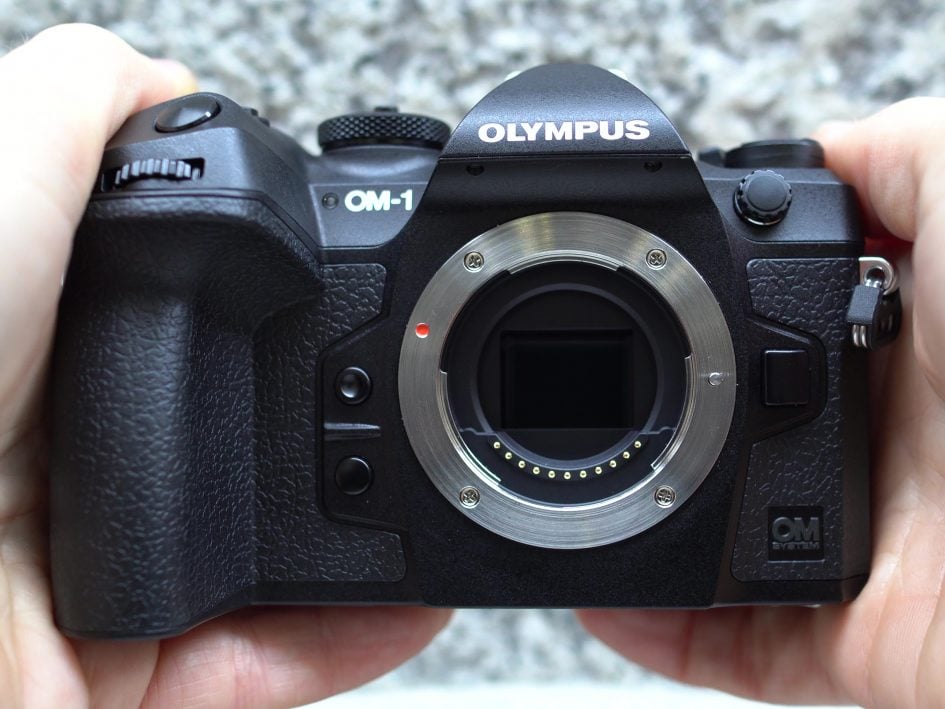
Moving on, arguably the most exciting upgrade on the OM-1 is its brand new sensor, which may match the previous one in terms of the 20 Megapixel resolution, but now features a stacked BSI design. OM Systems claims it’ll deliver an extra stop of dynamic range and a two-stop benefit in noise levels over the previous sensor first seen on the EM1 Mark II back in late 2016.
I will of course be testing these claims in my final review, along with making comparisons against other systems which haven’t stood still either during that time, but in the meantime, the new sensor and image processor also bring a raft of focus and speed enhancements to the OM-1.
The previous sensor already sported phase-detect autofocus over arch rival Panasonic, but the new sensor greatly increases the coverage and density to 1053 cross-type AF points across the entire frame. The OM-1 also gains improved face and eye detection and includes object recognition for planes, trains, cars, cats, dogs and birds. I’m looking forward to putting this new Quad-Pixel AF system through its paces.
The electronic shutter can shoot at up to 50fps with continuous AF or 120 with single AF, both speeds also available in Pro Capture mode which starts buffering images before you fully push the shutter release. The increased readout speed of the sensor should also reduce rolling shutter artefacts, making the electronic shutter modes more practical.
If your subject is mostly static and you fancy more detail, the OM-1 inherits the High Res Shot mode of recent models which captures and combines eight images to boost the resolution to 50 Megapixels when handheld, or up to 80 on a tripod, and the in-camera compositing is now over twice as fast.
The built-in focus stacking can still combine up to 15 images in-camera, but again is now faster than before, and if you prefer to assemble bigger stacks on your computer, focus bracketing with more frames is of course still available.
Amongst the wealth of other cunning modes inherited from earlier models, Live Composite mode now works handheld, while the Live Neutral Density simulation is now available up to ND64.
If you’re a video shooter, the OM-1 represents a big upgrade over its OM-D predecessors, supporting uncropped 4k up to 60p in either 16:9 or the wider DCI shapes. If you record in H.264, the tonal range is 8-bits, extending to 10 bits when switched to H.265.
Slow motion fans will appreciate 1080 video now being available at up to 240p, I believe with autofocus albeit also incurring a crop. There’s also HLG, OM Log for the graders, and, I’m pleased to report, an Auto ISO option when filming in the Manual exposure mode.
The OM-1 will also output 12 bit 4k RAW video over HDMI to external recorders, although as you’ve already seen, using a Micro HDMI port.
I’m told you can film for longer than 30 minutes per clip internally, and look forward to testing not just the quality of the video but how the stacked sensor will hopefully reduce rolling shutter artefacts.
As always, OM System wouldn’t confirm who made the sensor, but many of the specs look similar to a Sony component announced last year. Eagle-eyed analysts will note the Sony sensor can potentially do 4k at 120p, whereas the OM-1 tops-out at 4k 60.
Now there’s more than just a sensor involved in achieving this, as you’d also need support from the processor as well as heat and power management, and sufficiently fast card access. The bottom line is whoever makes the sensor, you won’t be getting 4k 120 on the OM-1, nor higher than 4k resolutions, as these are hardware limitations.
Panasonic has however promised 4k 120 as well as 5.7k from their GH6, the latter suggesting it may use a different sensor than the OM-1 depending on how they count their K’s. We’ll find out when the GH6 becomes fully public, so check my channel for the latest news.
Back to the OM-1 and whether you shoot stills or photos, you get to enjoy one of the best built-in stabilisation systems on the market, with OM Systems claiming up to seven stops of compensation for unstabilised lenses, extending to eight when used with a Sync IS lens. The seven stops of IBIS alone may be the same as the Mark III and EM1X, but both those allowed me to handhold ludicrously long exposures, up to eight seconds with a 34mm equivalent lens.
Speaking of exposures, the OM-1’s mechanical shutter offers the same range as the previous models, so you get a top speed of 1/8000 and up to 30 minutes with the Bulb timer. Switch to the silent electronic shutter and the top speed increases to 1/32000. The flash sync is 1/250 for the mechanical shutter or 1/100 for the electronic.
In terms of burst speed, the electronic shutter can fire at up to 120fps depending on the mode and some restrictions; for example the SH2 mode will only support its 50fps maximum with a handful of lenses, all in the Pro series. Meanwhile the mechanical shutter is rated to 400,000 actuations and fires at up to 10fps
Speaking of lenses, OM System is releasing two alongside the new body: the first is an updated version of the 12-40mm f2.8, costing 899 pounds and sharing the same optical design as before but with new coatings and IP53 sealing to match the camera. The second is a brand new design, a compact 40-150mm f4, costing 799 pounds and again IP53 rated; both lenses will be branded as OM System.
Olympus OM-1 verdict so far
The OM-1 proves there’s not just life left in the Micro Four Thirds format, but also for a brand we thought would never grace a new camera body again.
The OM-1 refines the excellent controls and ergonomics of the EM1 Mark III, improves the already leading weather-proofing and built-in stabilisation, and, thanks to a new sensor and image processor, accelerates almost every function while boosting autofocus capabilities, image quality and video frame rates.
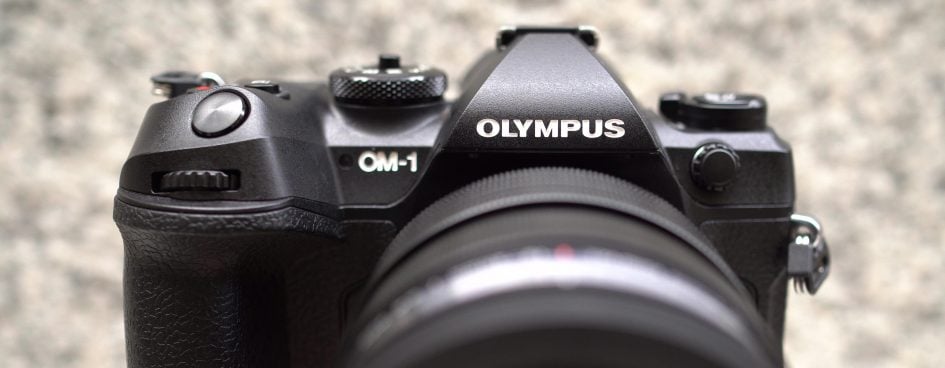
The photo resolution may remain the same as earlier models, but the claimed improvements in noise levels and dynamic range, as well as focusing speed and object detection, could be sufficient for fans of the system who were already satisfied by 20 Megapixels; plus videographers now get 4k up to 60p and 1080 up to 240p. If it all works as promised, it could be very tempting for outdoor and wildlife photographers.
I’d say the asking price is also reasonable given the mobility and robustness benefits, although much the same arguments remain as before: if you’re happy with the sensor size but are more of a pro videographer, look out for the Lumix GH6. If you want a bigger sensor, consider the wealth of full-framers now available from the slightly cheaper Lumix S5, to the more expensive Sony A7 IV and Canon R6. And if you love Olympus but have less to spend, there’s good deals on the EM1 Mark III.
There’s pros and cons to all of them and ultimately that’s all I can say until I test a final production model. Well apart from one thing: I was surprised how powerful the choice of branding felt, not just seeing the Olympus name for one last time on a new camera, but also switching the OMD EM mouthful for a simple OM-1, bringing us full-circle from one classic to possibly another. It feels like a fitting end for the Olympus camera brand and hopefully a prestigious start for OM Systems.
Check prices on the Olympus OM-1 at B&H, Adorama, WEX UK or Calumet.de. Alternatively get yourself a copy of my In Camera book or treat me to a coffee! Thanks!